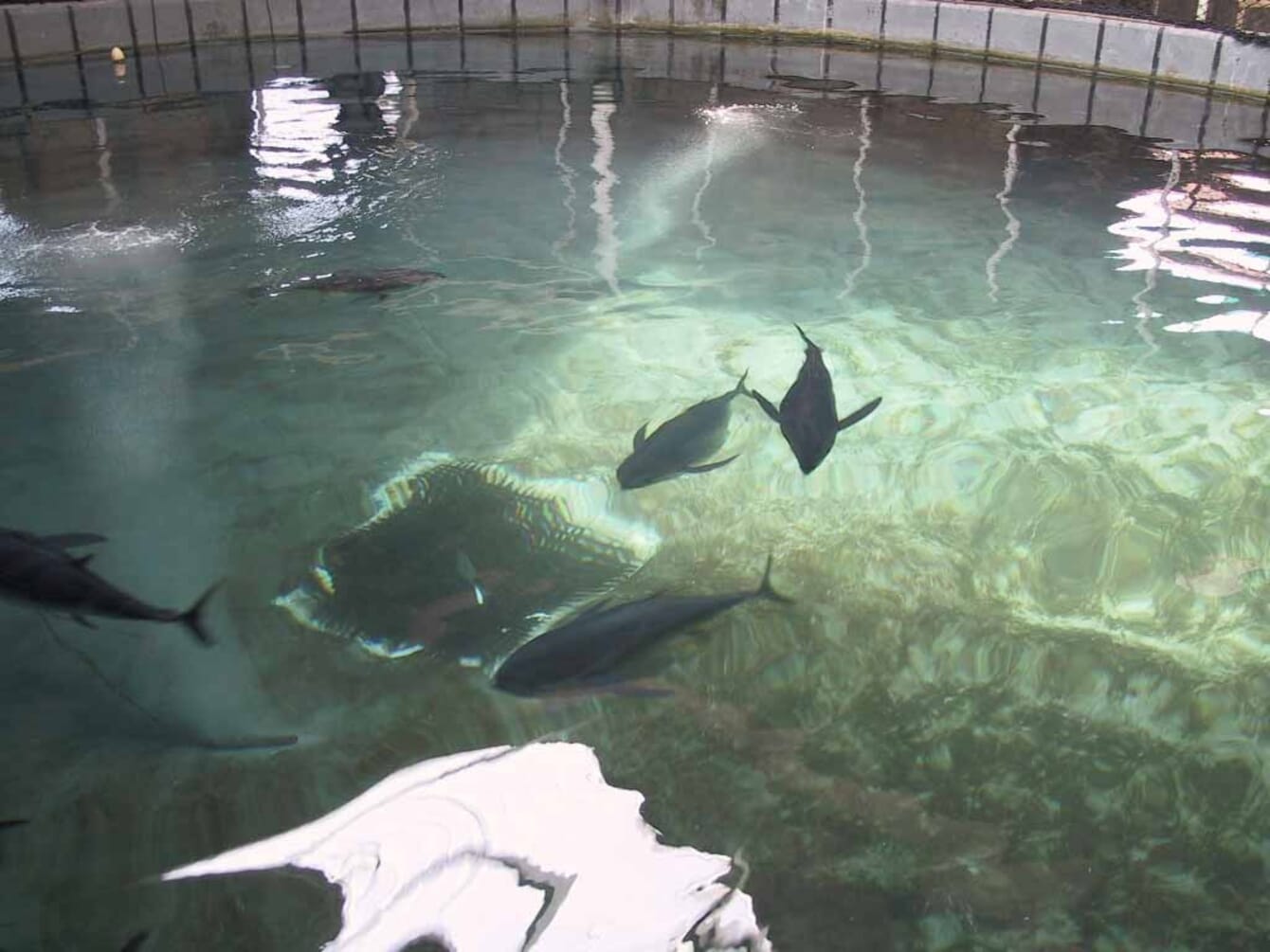
Yellowfin are fed a diet of 50 percent squid and 50 percent sardine and their growth in weight averages 22-23 kg/year © IATTC
The Inter-American Tropical Tuna Commission’s (IATTC’s) Early Life History (ELH) Group has conducted research on the early life history and biology of tropical tunas at the Achotines Laboratory in the Republic of Panama since 1986.
In October 2021, the laboratory reached a milestone of 25 years of sustained spawning of yellowfin tuna in captivity. The near-daily spawning of yellowfin at the lab represents the only sustained spawning of yellowfin tuna in captivity in the world.
In 1994, an expansion of the laboratory’s tank and seawater system, financially supported by the IATTC and the Overseas Fishery Cooperation Foundation (OFCF) of Japan, accommodated research studies of yellowfin tuna at the Laboratory. Captive adult yellowfin commenced spawning in October 1996 and have spawned almost daily to present day.
Since 1996, laboratory staff have been collecting yellowfin in local waters and initially stock the fish in smaller reserve tanks until transfer to the in-ground, concrete spawning tank (17 m diameter x 6 m depth). The average yellowfin at capture is approximately 60 cm in length and 1.2 years of age. The average residence time in the spawning tank is 2 years, although individual fish have resided in the tank up to 6 years. Fish in the spawning tank are fed a diet of 50 percent squid and 50 percent sardine, and their growth in weight averages 22-23 kg/year. The ELH Group has published descriptions of the spawning and courtship behaviour of the adult fish, and the effects of physical factors on spawning and egg production.
Since 1996, laboratory staff have collected over 2 billion fertilised eggs for research on reproductive biology and early life history. The ELH Group conducts ecological experiments to estimate the effects of biotic and environmental factors on the egg, larval and early-juvenile stages of yellowfin and uses the results to develop growth and survival models of early life stages prior to recruitment to the tuna fisheries in the eastern Pacific Ocean. The ELH Group also conducts laboratory investigations into the effects of climate change on pre-recruit life stages.
Research by the ELH Group indicates that the larval and early-juvenile life stages of yellowfin are characterised by rapid growth, high metabolic rates and high mortality. Piscivory/cannibalism occurs very early during the larval stage, at about 10 days after hatching. Growth in length of larvae and early-juveniles is rapid and non-linear and growth in weight is exponential. Individual variability in growth among larvae and early-juveniles is very high.
The ELH Group’s research focus is now expanding from the egg/larval stages (0-1 month) to the early-juvenile stages (1-6 months). The studies of yellowfin growth and survival during the first 6 months have strong application to tuna ecology and aquaculture. Improved rearing success of early-juvenile yellowfin now provides opportunities to study density-dependence in juvenile growth, the release of tagged early-juveniles in coastal waters of the Panama Bight to provide rare information on pre-recruit movements and distribution, and supports the potential completion of full-life-cycle rearing of yellowfin.
The ELH Group also studies the potential effects of climate change on early life stages of yellowfin. This research has included laboratory investigations of the effects of ocean warming, ocean acidification and oxygen stress on the sensitive egg and larval stages of yellowfin, and the results have been used to develop models of the current and future effects of a variable climate on the yellowfin populations in the Pacific Ocean. These climate-related studies will continue to be a major focus of research conducted at the Achotines Laboratory.
The majority of the yellowfin research has been conducted by the ELH Group of the IATTC, but important investigations have also been conducted in collaboration with Japanese scientists, the University of Miami’s Aquaculture Program, and other academic and nongovernmental researchers. In 2015, in collaboration with Kindai University of Japan, the first transfer worldwide of yellowfin juveniles from land-based tanks to a sea cage was successfully completed at the Achotines Laboratory.
The members of the ELH Group of the IATTC are: Daniel Margulies (Program Coordinator), Vernon Scholey (Achotines Laboratory Director), Yole Buchalla (Assistant Scientist) and Susana Cusatti (Assistant Scientist).
Information on the research conducted at the IATTC’s Achotines Laboratory is available at https://www.iattc.org/AchotinesLab/AchotinesDefaultENG.htm.


